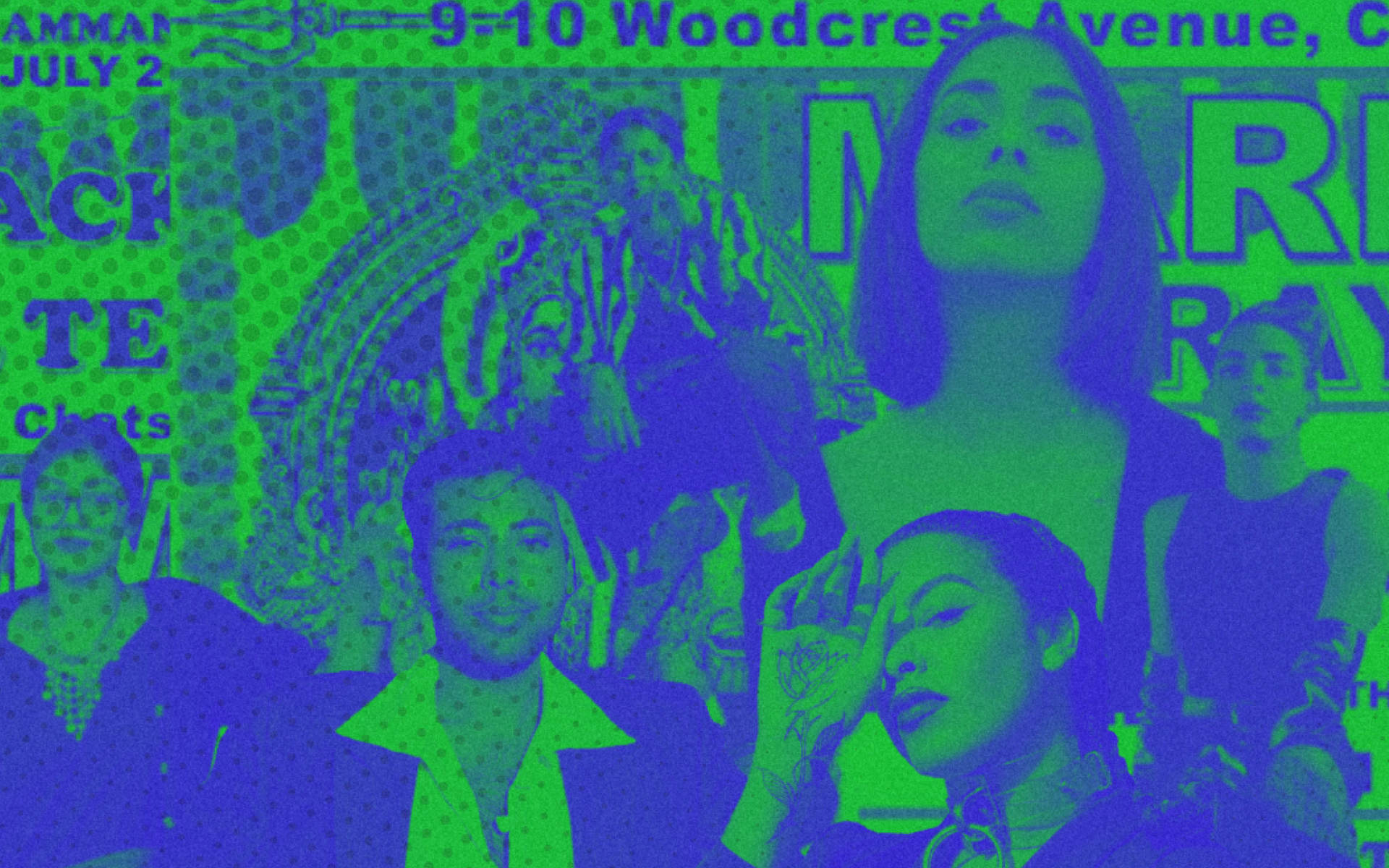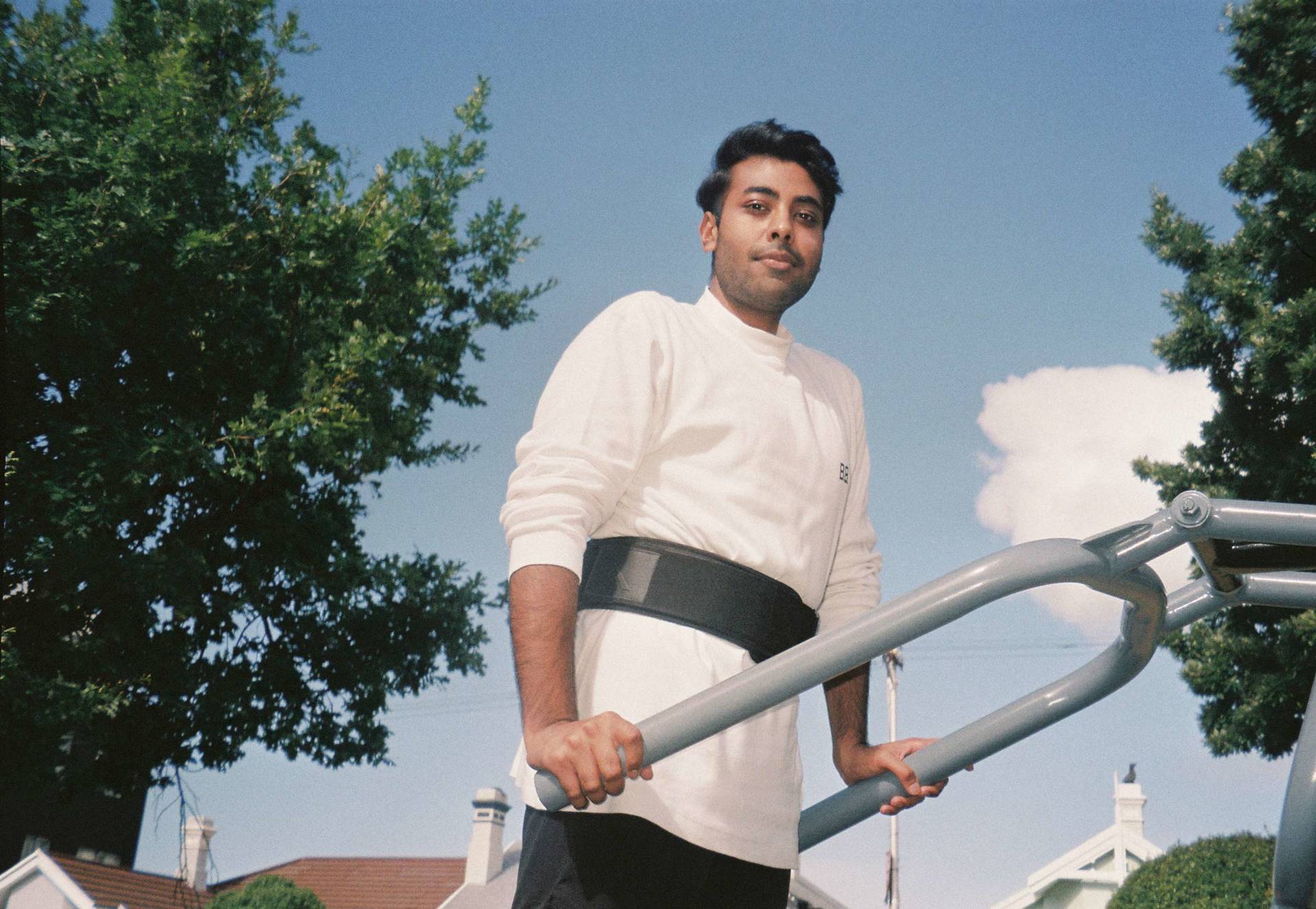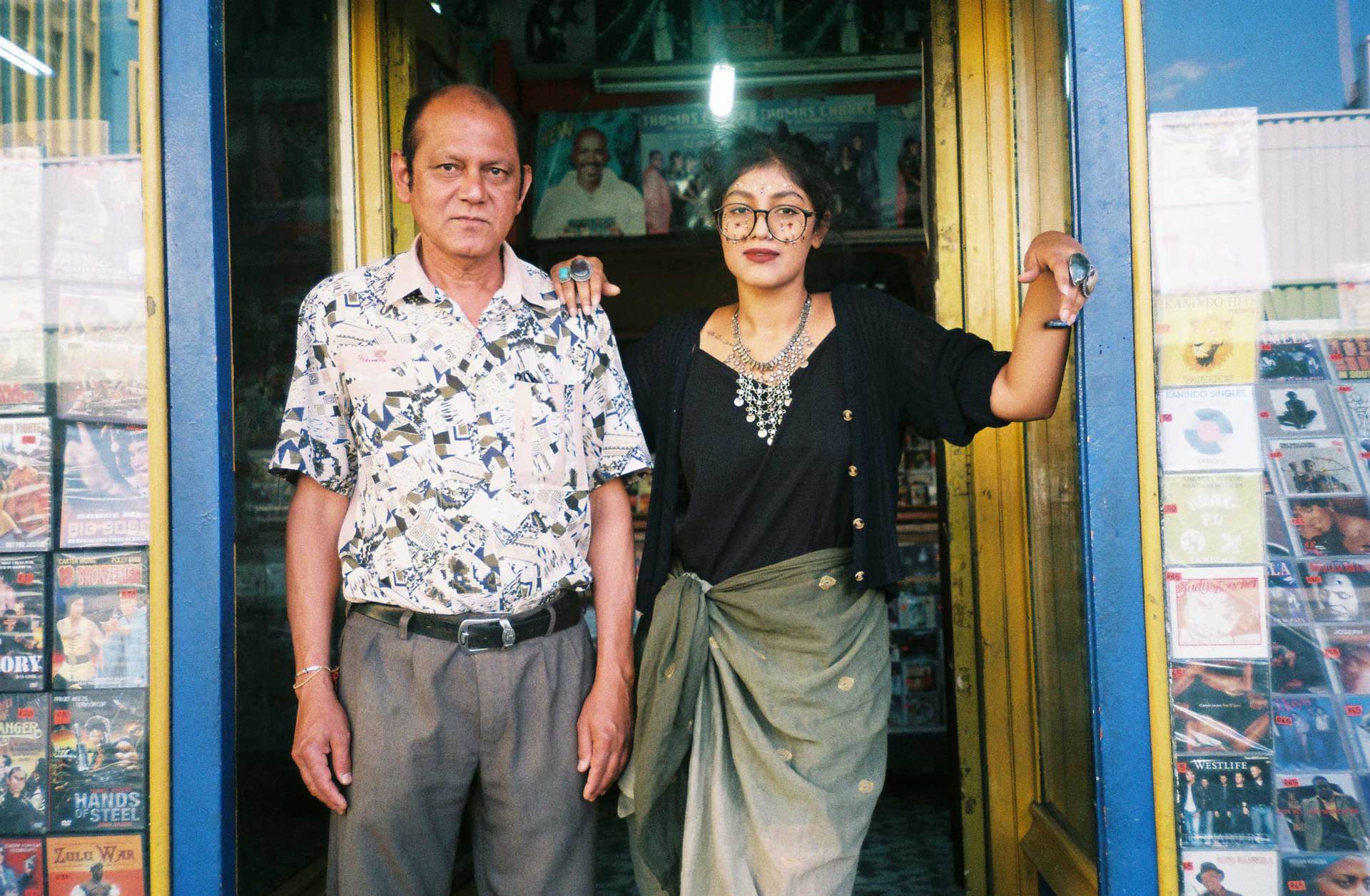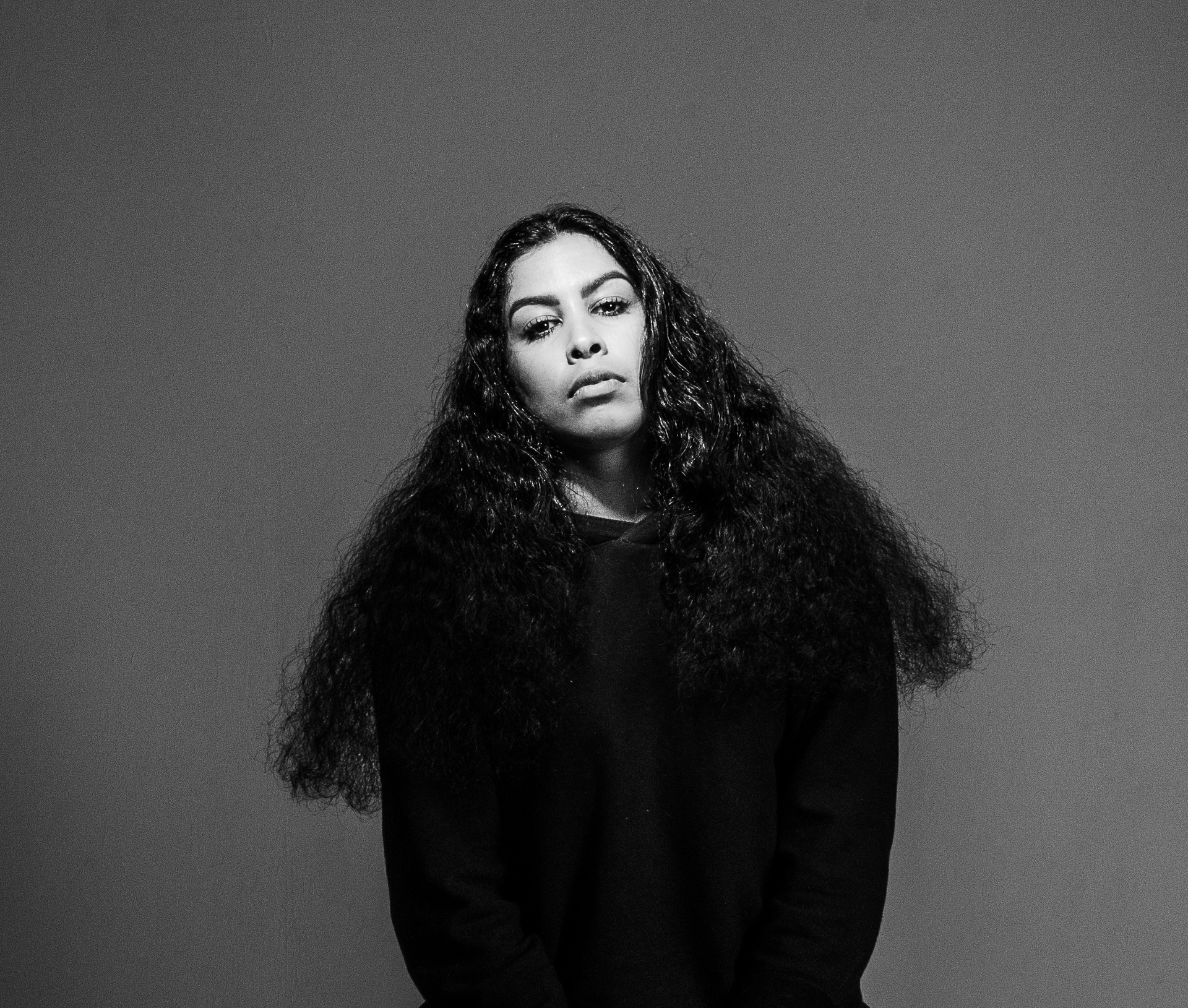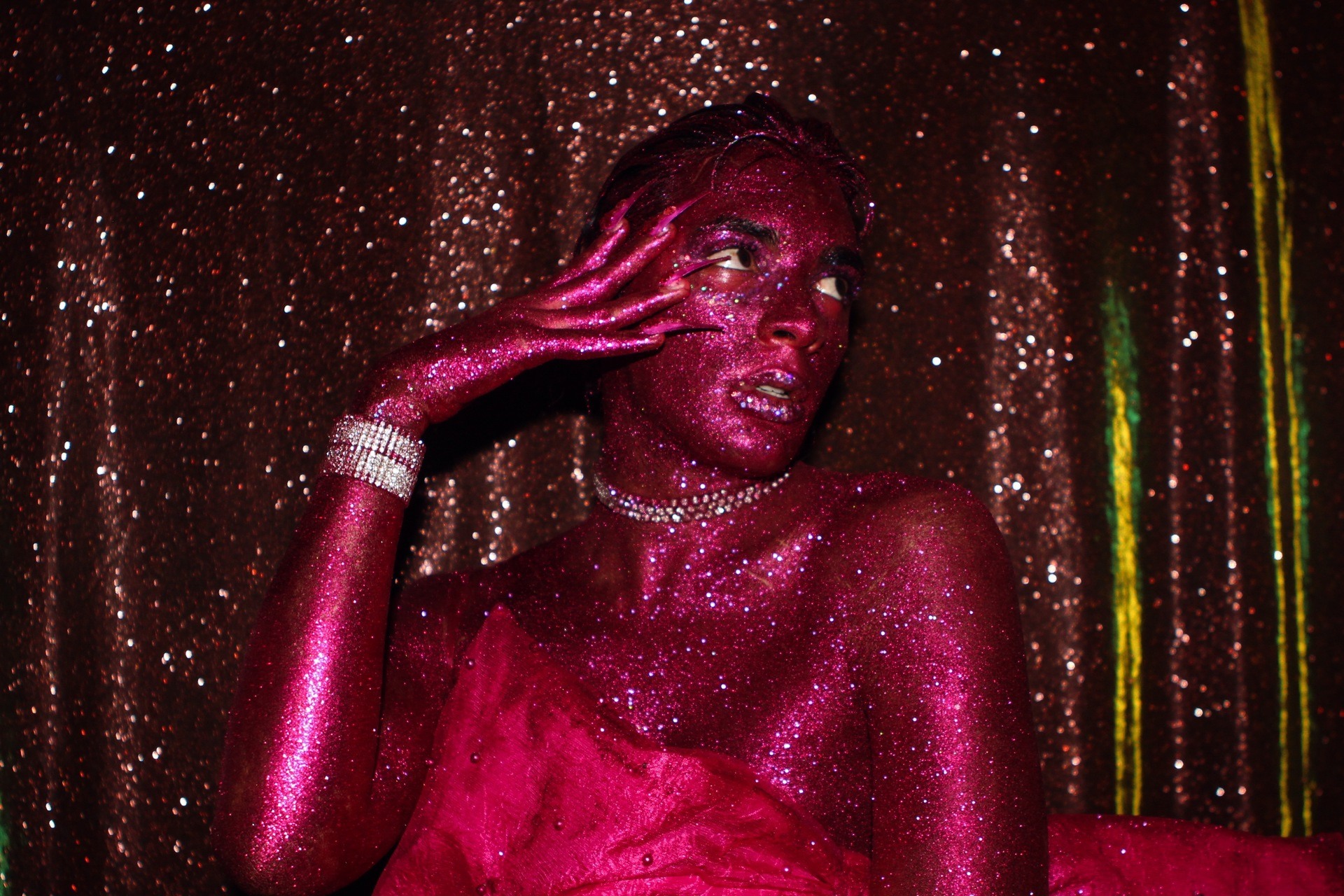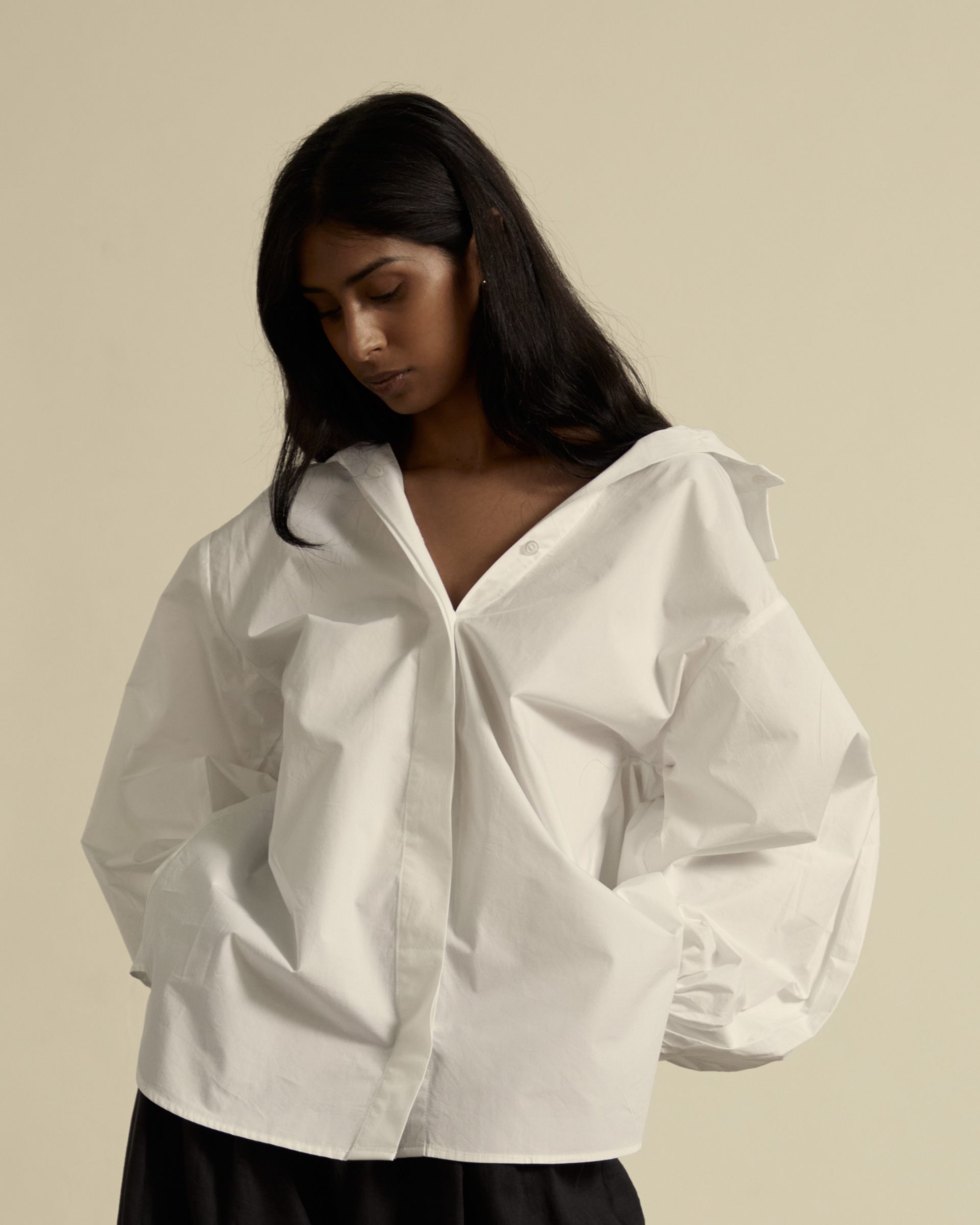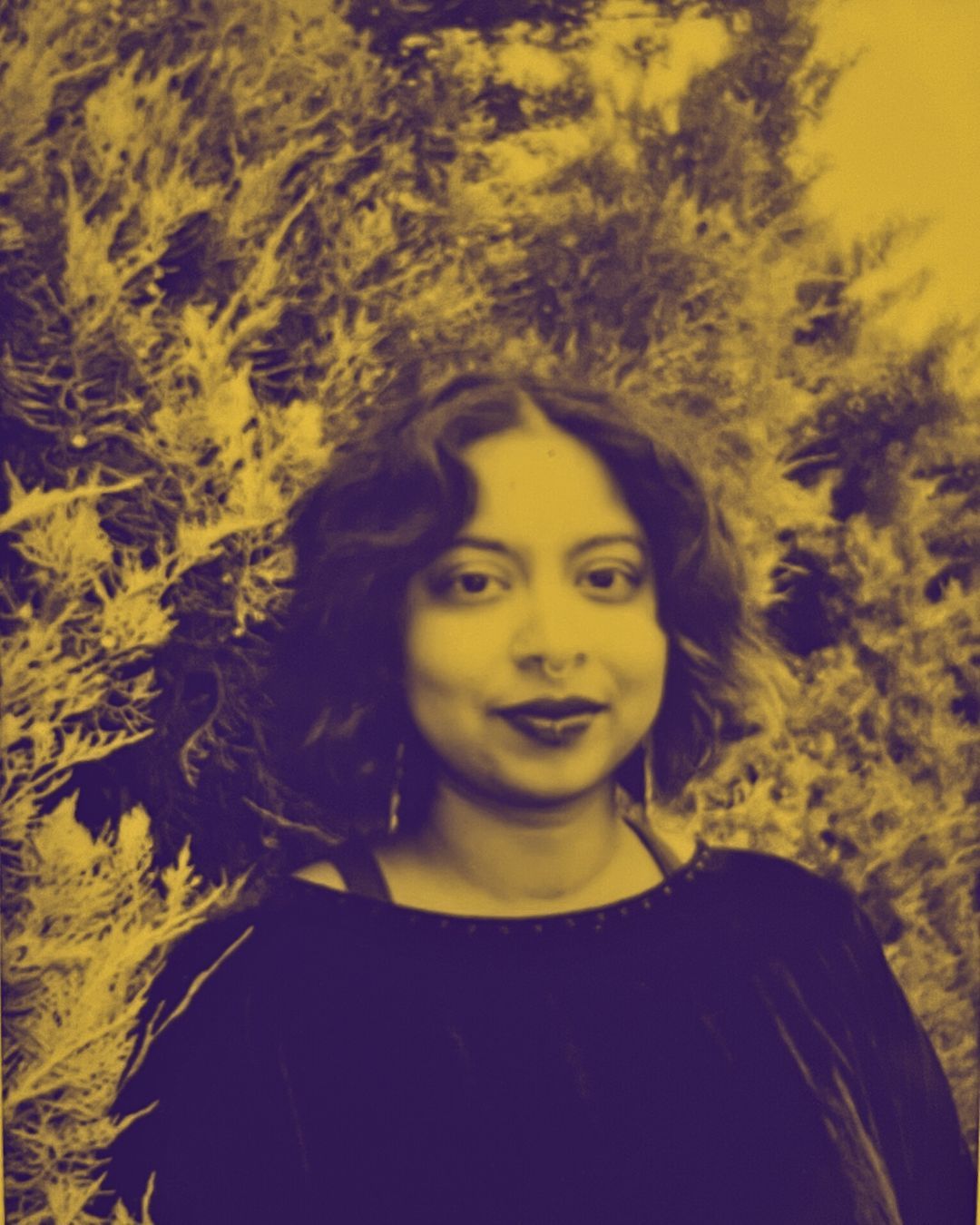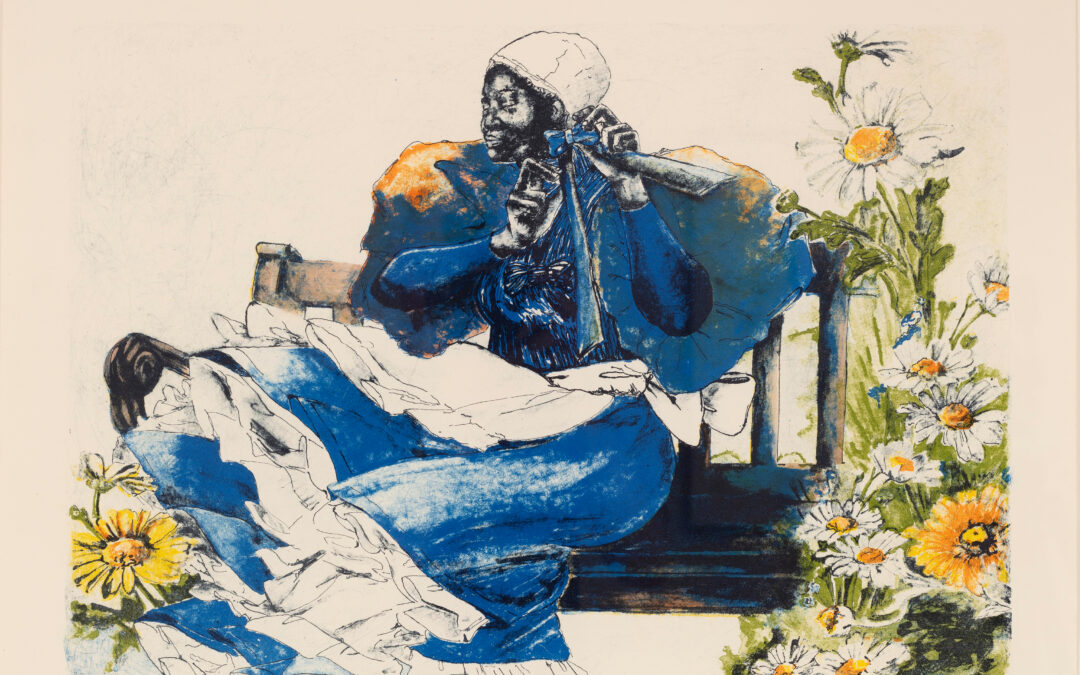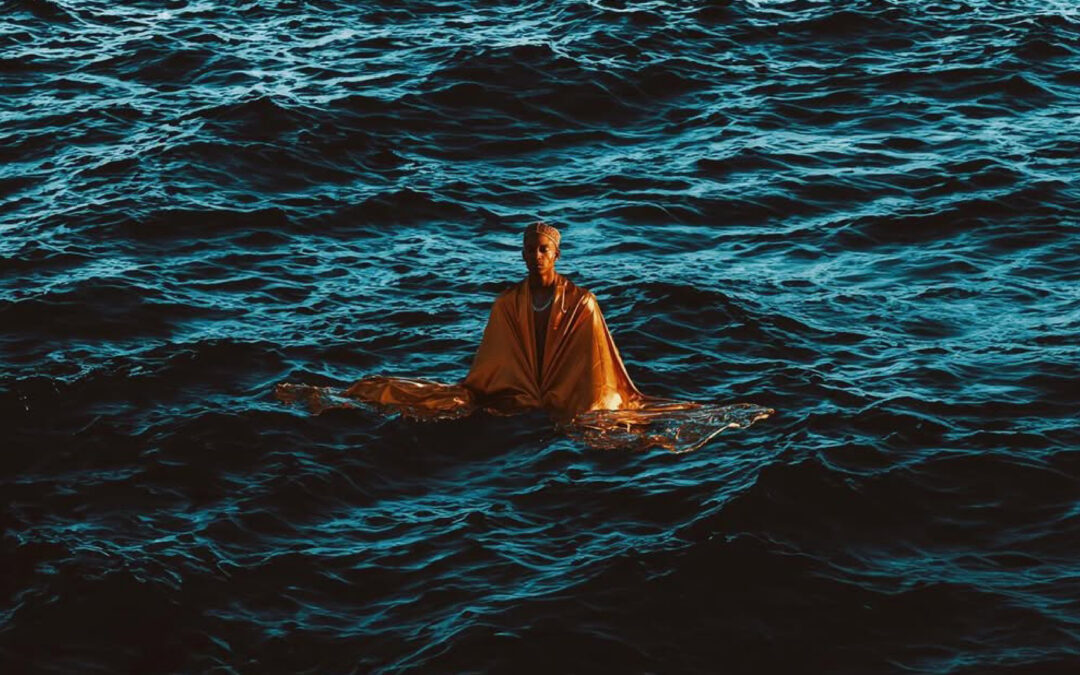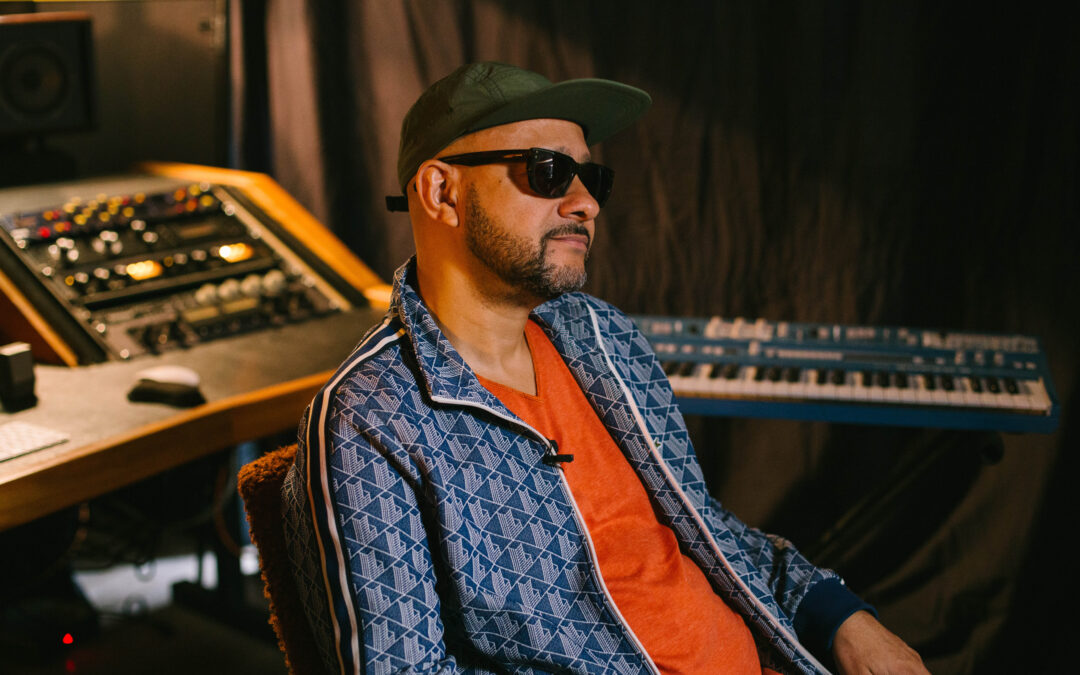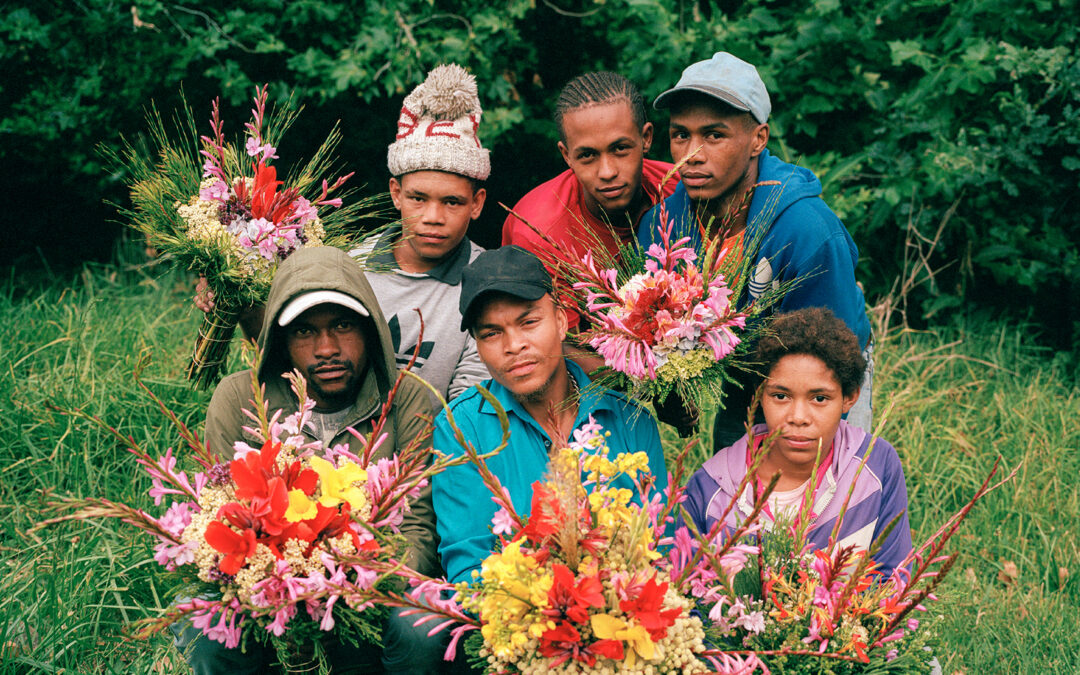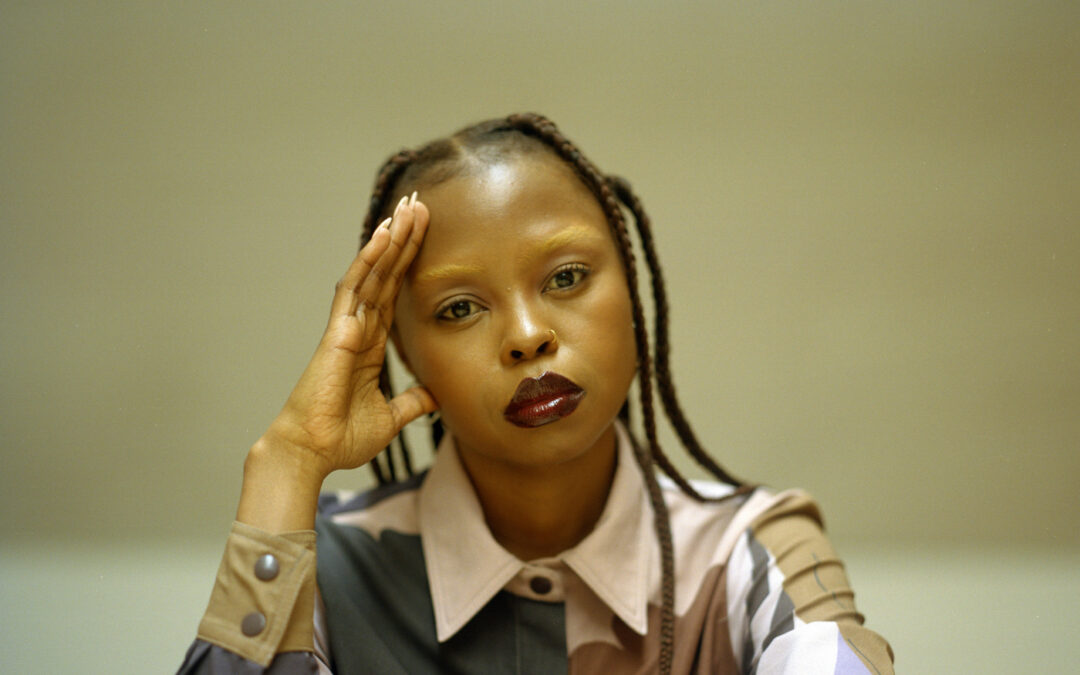Reflecting the tensions and harmonies of what it means to be ‘between-worlds’ – and in turn, inhabiting one’s own world – renders the experience of being in a diasporic community a kind of living revelation of cultural hybridity. South Africans of South Asian and Indian heritage are an expression of this dynamic interplay – and it’s precisely this nexus point, the place of negotiation and articulation of a multi-faceted expression, that Kutti Collective was born. A group of six artists living between Cape Town, Durban and Johannesburg, Kutti is a home for each artist who, by virtue of their relationality with one another, demonstrate what it can be to exist outside the confines of prescriptive identities in any one society – and honestly, they’re just have fun doing it.
The collective’s name ‘kutti’ is simultaneously a derogatory slang word in Hindi and Punjabi translating to ‘bitch’ and in other dialects, a term that means ‘darling’ – and the members, each abide by the reclamation of their individual and collective identities through the use of this word, as a symbol for their collective intentions, and the dualities that a single word can hold varying meanings in varied contexts. As the group previously shared in their portrayal for Document Journal, lensed by Caroline MacKintosh, “we are simultaneously reflecting and engaging with our identities through our past and present experiences and traumas. But we are also ultimately transcending what that expected ‘Indian’ experience is, or what it should look like, through our art and our lives.”
Kutti is composed of nightlife creator, writer and club kid, Tazmé Pillay, artist and painter Akshar Maganbeharie, interdisciplinary artist Saaiqa, writer, collage and zine-maker Youlendree Appasamy, and artists Tyra Naidoo and Alka Dass. As Saaiqa explains, “I’m an interdisciplinary artist, and I draw from different aspects of my knowledge base. I studied journalism and then branched into photography, which led me to the art scene, firstly through conceptual photography until I pushed myself to work with other mediums. My thematic focus is around mental health and the psychological landscape we traverse as human beings, intersecting with identity politics.” Akshar notes that, “I’m an artist and a painter. My work is very abstract – I draw inspiration from pop culture, and autobiographical experiences, and how those two interlink. My work is more of a visual experience than it is a verbal experience.” Just this contrast between Akshar and Saaiqa cuts away at any notion that there might be similarities in the group’s work, and it is precisely the nuance of each member’s individual practice that informs the full measure of Kutti.
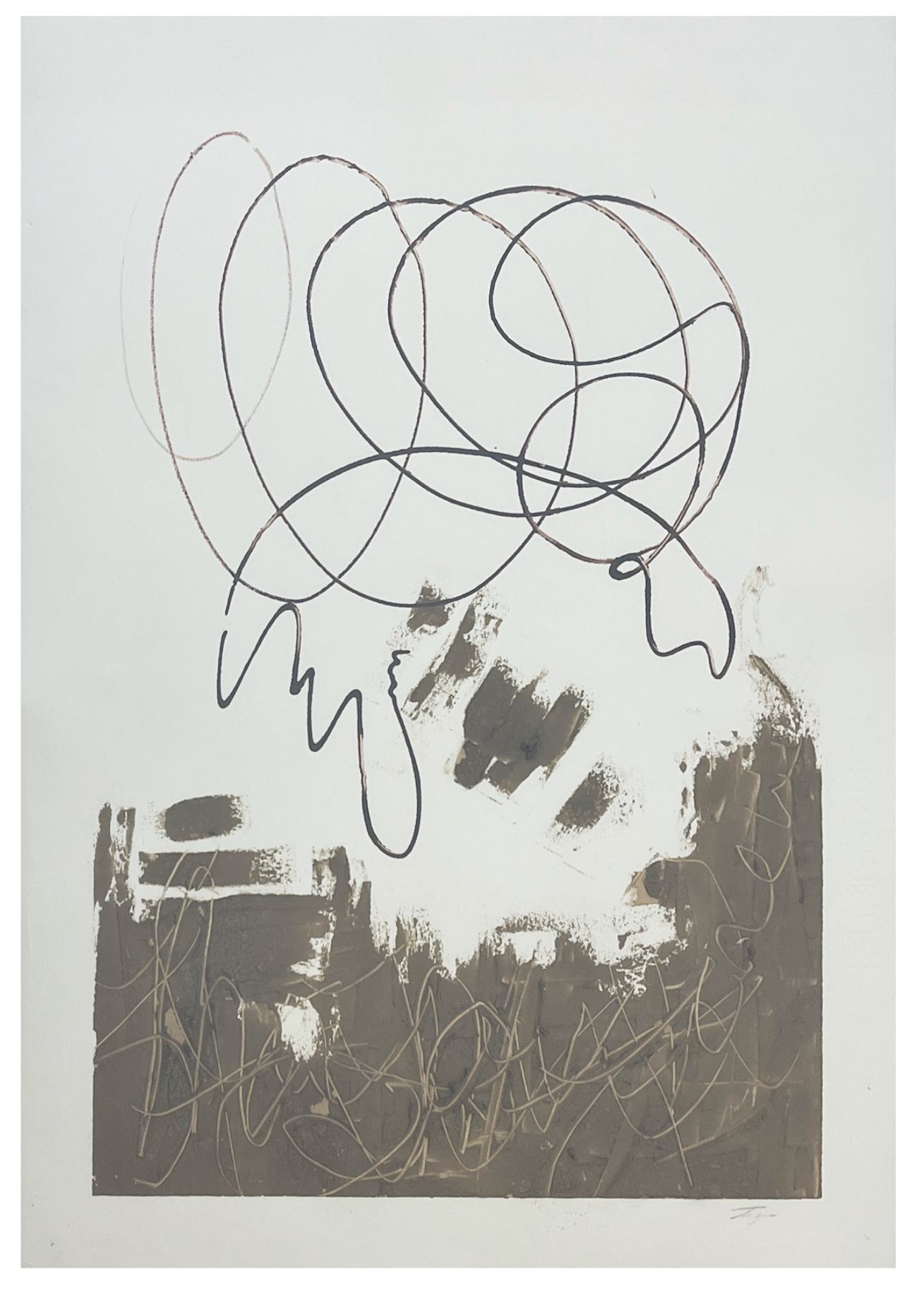
Artwork by Tyra Naidoo, “Untitled XI Medium”, Henna on Fabriano Rosaspina (575 x 425 mm), 2023
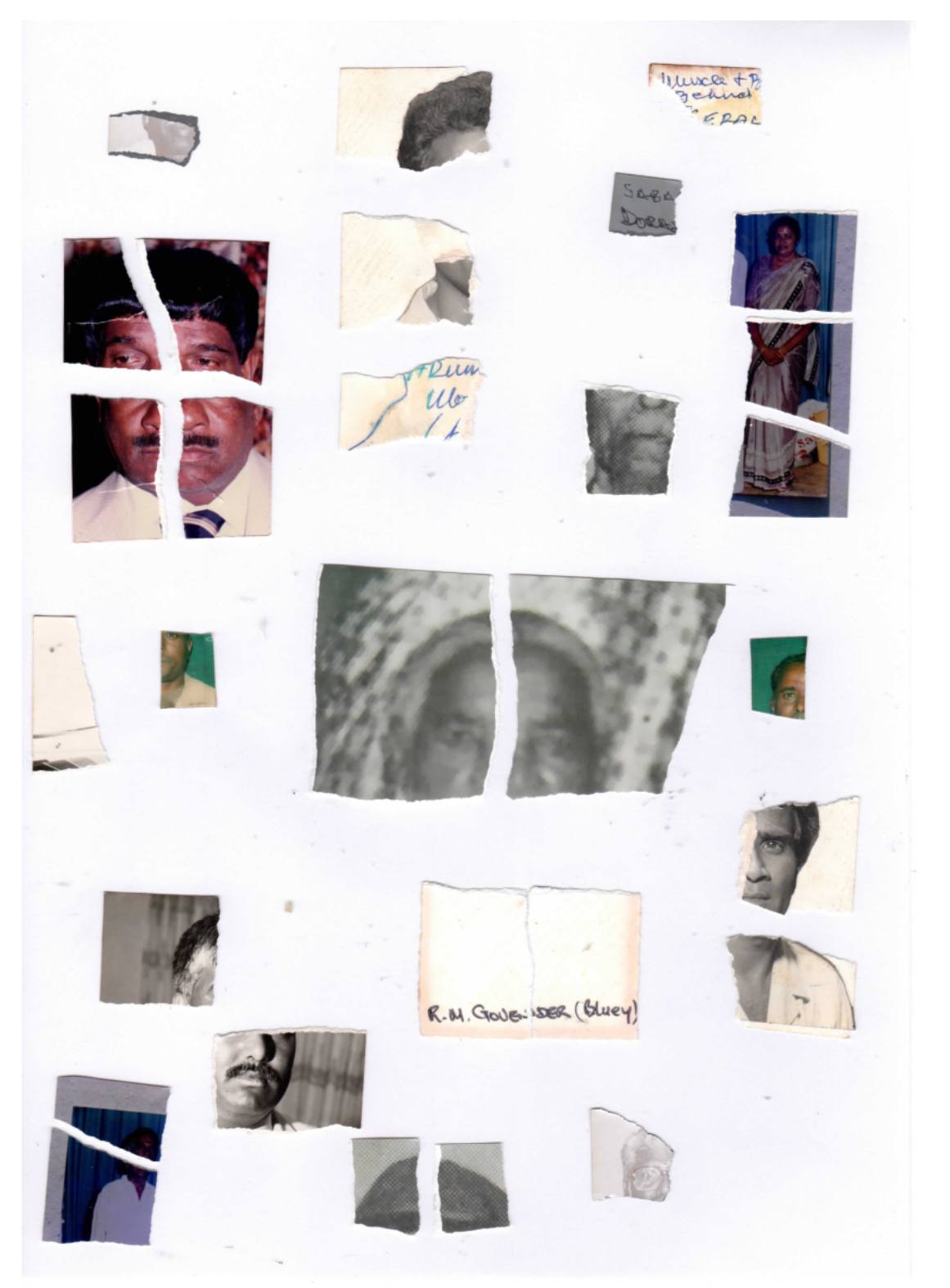
Artwork by Youlendree Appasamy, “Archive Failure Medium”, mix media collage, 2024.
On the formation of the collective – and like any good, modern-day origin story goes – Akshar explains that Kutti was born when, “I woke up one morning and I was added to a Whatsapp group. It started as a network of South African Indian artists and creatives. Alka and Tyra started the Whatsapp group, and it ebbed and flowed from there. We started doing projects together towards the end of 2019. We weren’t planning on making anything together – the space really started as a support system, because we had found that there wasn’t a lot representation of South African Indian artists in the creative and art industries in South Africa. It was really nice to have that point of connection and relation to each other.” What strikes me in our conversation is the realisation that the collective is first-and-foremost a refuge for each of its members. In collectivisation, each artist has found a way to navigate the complexities (and often, the perplexities) of being artists in an creative landscape that so often demands our personal legitimation through the altar of personal branding and individualistic sacrifices.
The collective has become a foundational part of each member’s lives, as Saaiqa shares, “we didn’t really know what we were doing at the beginning. We did Document Journal in 2019. Once COVID happened, we actually all had the time to regularly meet on Zoom and discuss both our personal experiences, and ideating what it was that we could do as a collective. A few opportunities came our way that year and it started the flow of how we could present and work together. It’s amazing, actually, that it was a Whatsapp group to begin with, and now we’re able to engage in different collaborations and works.”
There are two unifying threads between each Kutti member – their diasporic and queer experiences. Each member holds the vast multitudes of these threads, in deeply varied ways, and as Tazmé shares, their group dynamics has offered a liberation among each other, to share in the profound and complex experience of being South Africans of South Asian descent; “I think the idea of South Asian heritage is something we have explored or thought more about since coming together. Personally, it wasn’t something that I was majorly influenced by or in conversation with – I was acting a lot in drama school and performing a lot of South Asian characters but I hadn’t really yet recognised how important my culture was to my work. The collective has been a space that was safe enough for us to explore what a major and inherent part of who we are, and our South Asian heritage, especially in terms of our practices. I mean now, I DJ Bollywood music in a sari! That freedom, to explore my culture without compromising my identity or myself, is drawn from the safety and connection of our collective.”

Artwork by Alka Dass, “Flame flower Medium”, Cyanotype, thread & wool drawing (51 x 37cm), 2023.
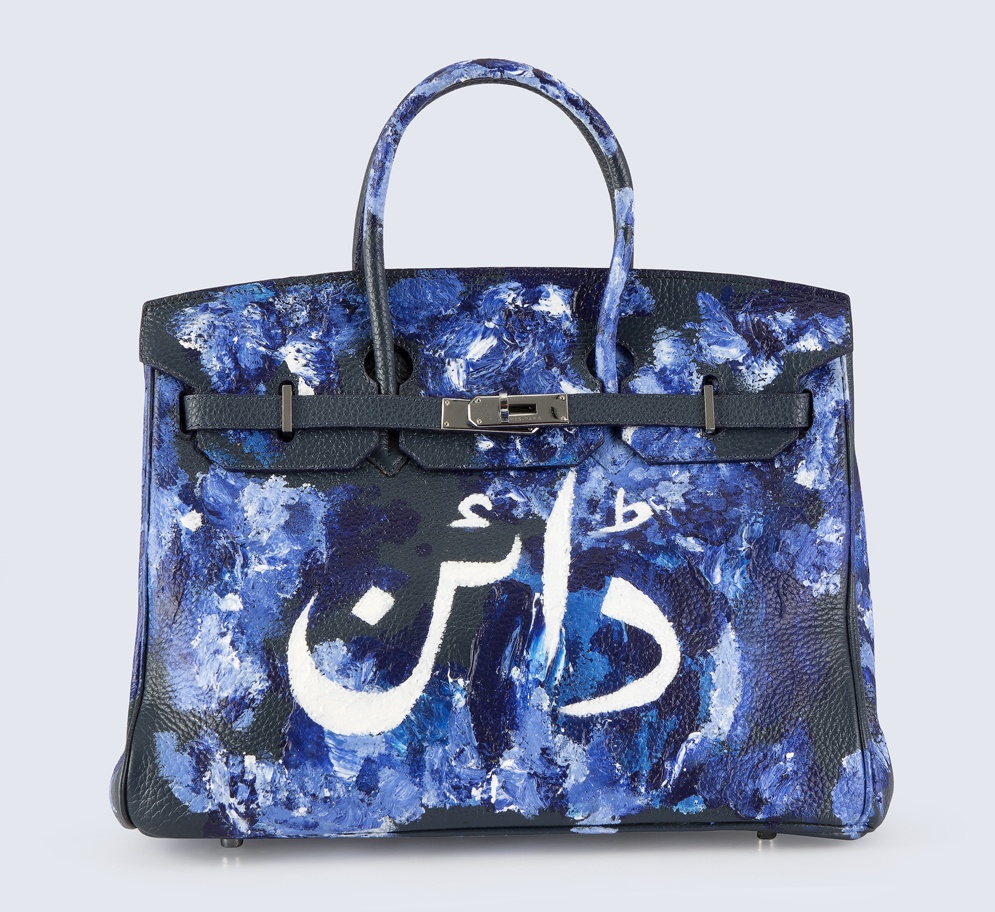
Artwork by Saaiqa, ” ڈائن Witch”, Fake Birkin Bag, Acrylic, 2020.
Akshar goes on to explain that Kutti has evolved in response to their knowledge-sharing and contemplations, saying that “initially, we had thought of using ‘Desi’ as a way to describe ourselves. It’s kind of uncommon to use in a South African Indian context. I’m more South African than I am Indian, my ancestors are South African, and we are from a culture that’s very unique to the context of being in this country. We are more reflective of our own thing, than a clear link to India.” while Saaiqa notes that, “we learn a lot about ourselves through each other. It’s quite an emotional and special thing. We might be all South African Indians, but we come from a variety of social and class dynamics, and our experiences are so nuanced.”
Gayatri Gopinath, preeminent scholar in feminist, queer and diasporic studies, uses the term ‘queer aesthetic practice’ in her book ‘Unruly Visions’ to explore how such expressions of art by the hands of diasporic artists, like those within Kutti, share in a unique positionality that can subvert dominant cultural narratives and challenge normative constructions of identity and belonging through a very, very specific ‘queer optic’, born from the materia of the cultural hybridity as experienced by said diasporic community. It is perhaps why, when viewing Kutti’s archive on IG — and anything the collective does – it is difficult to articulate its brilliance and originality. This is because the group’s dynamics, and individual work, is a vision of something entirely new. It is an optic being born before our eyes – and we are among the first to witness it as an articulation of 21st century, South African Indian creative expression. As Tazmé says, “I definitely compared the experience of being part of a diaspora to the experience of queerness, in the sense that it’s this strange thing where you exist in a liminal space of existence. It’s neither here nor there. It’s living beyond the present. Diasporic identity is interesting. I grew up with elders that held very tightly onto tradition, and as you grow you start to learn that these things aren’t actually the things that are happening today in the place that we originate from. Some traditions are carried on in diasporic contexts as a way to community-build and hold onto a memory of something. It’s almost like practising a queer form of tradition.”
I ask Tazmé, Akshar and Saaiqa how their queerness has informed Kutti as a group – to which Tazmé counters that, “it just so happens that we all are queer!” while Saaiqa notes that, “it wasn’t something we discussed in the beginning. There’s no pressure to make these kinds of declarations – we just get to be who we are, whether it’s quite explicitly and whether it’s not. That happened quite naturally. We don’t have to always speak on it, we can just exist as people containing the multiplicity of our identities,” and Tazmé explains that, “we’ve definitely all shared a frustration of ‘living our labels’ within the creative world. With each other, we’re just artists.”
Members of Kutti Collective: Akshar Maganbeharie photographed by Caroline McKintosh, Alka Dass Photographed by Caroline McKintosh, Portrait of Saaiqa Ebrahim by Hanna Thrul, portrait of Tazme Pillay, portrait of Tyra Naidoo and portrait of Youlendree Appasamy.
Whether its their showcase as a collective at RMB Latitudes art-fair earlier earlier this year, or Kutti’s upcoming collaboration in November with Joburg’s coolest Indian restaurant, Mother-In-Law, the collective are not bound by any particular vision ahead. Instead, they embrace the natural flow of connectivity as it comes their way. Regarding the event with Mother-In-Law – set to be their biggest collaboration to date – the Kuttis will be collaborating with MIL and chef & food creator, Yoraya Nydoo, conceptualising and curating a three day festival in which music, party, food and art all intersect. The events will take place in Johannesburg in November and will be infused by themes of nostalgia and community, and announcements will be made soon.
Kutti’s connection as a group remains their guiding compass – and when opportunities arise, they decide whether it’s a fit, “there’s no plan or strategy to what we do. We each have such intense individual practices, so it’s great that the collective functions in a flow that changes – it waxes and wanes, some people have capacity to take more on for a certain project, and others for another project. We respect what each of us needs as human beings and individuals, ” says Tazmé and Saaiqa notes, “and we approach everything in a very DIY way!” How freeing, then, to be a community that embraces spontaneity and collective synergy, above all else?
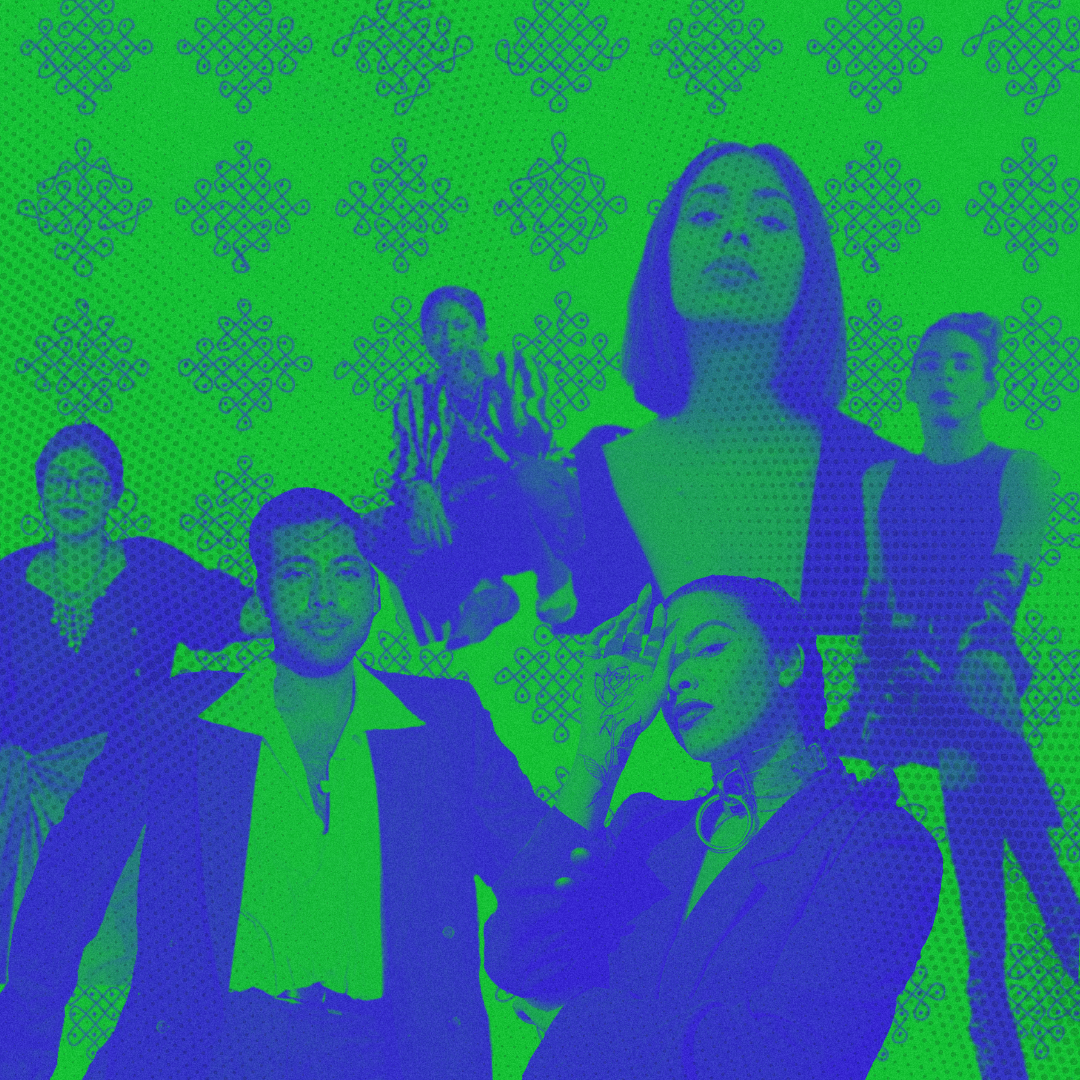
Kutti Collective collage by Youlendree Appasamy
Written by: Holly Beaton
For more news, visit the Connect Everything Collective homepage www.ceconline.co.za

